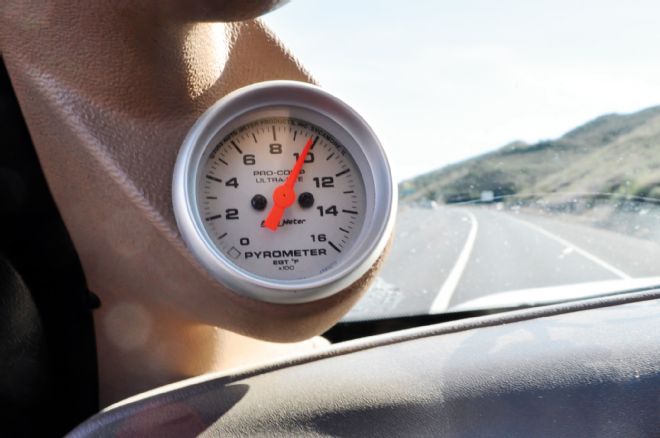 | 10 Common Towing Mistakes Pyrpmeter
1. Know Your Temps
Keeping an eye on a few pressures and temperatures will allow you to keep that powerplant humming along. At the bare minimum, every tow rig should have accurate coolant temperature, EGT (exhaust gas temperature), and transmission temperature gauges.
The majority of damaged engines we’ve seen can be traced to improper cooling, or running high EGT for prolonged periods of time. Overheating an engine can start a domino effect that creates multiple, permanent problems, such as a warped head, cracked pistons, and scored cylinder walls.
High EGT can even melt pistons in stock engines. Don’t assume that just because you don’t have massive injectors or a racy tune that you’re safe. We’ve seen stock rigs hit much more than 1,200 degrees on the pyrometer on dozens of occasions.
Transmission temps should be kept less than 210 degrees. At 270 degrees, most types of automatic transmission fluid will degrade rapidly, glazing over the clutch material and eventually causing a transmission to require a full rebuild. It’s important to note that most factory transmission temperature gauges are fairly inaccurate. So go aftermarket and put the temperature sender in the transmission pan, not the case.
Fuel and oil pressure, as well as oil temperature, are also good things to keep tabs on in the interest of engine longevity.
| 10 Common Towing Mistakes Pyrpmeter
1. Know Your Temps
Keeping an eye on a few pressures and temperatures will allow you to keep that powerplant humming along. At the bare minimum, every tow rig should have accurate coolant temperature, EGT (exhaust gas temperature), and transmission temperature gauges.
The majority of damaged engines we’ve seen can be traced to improper cooling, or running high EGT for prolonged periods of time. Overheating an engine can start a domino effect that creates multiple, permanent problems, such as a warped head, cracked pistons, and scored cylinder walls.
High EGT can even melt pistons in stock engines. Don’t assume that just because you don’t have massive injectors or a racy tune that you’re safe. We’ve seen stock rigs hit much more than 1,200 degrees on the pyrometer on dozens of occasions.
Transmission temps should be kept less than 210 degrees. At 270 degrees, most types of automatic transmission fluid will degrade rapidly, glazing over the clutch material and eventually causing a transmission to require a full rebuild. It’s important to note that most factory transmission temperature gauges are fairly inaccurate. So go aftermarket and put the temperature sender in the transmission pan, not the case.
Fuel and oil pressure, as well as oil temperature, are also good things to keep tabs on in the interest of engine longevity.
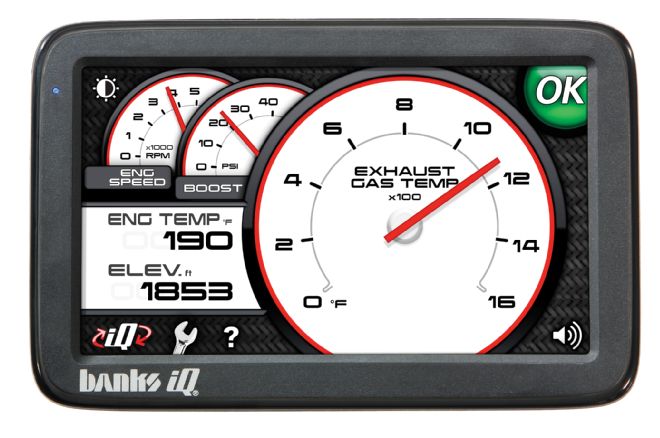 | Kits, such as the Banks
iQ Flash, offer a mix of
vital gauges and also have
diagnostic capabilities, all
in one tidy package.
| Kits, such as the Banks
iQ Flash, offer a mix of
vital gauges and also have
diagnostic capabilities, all
in one tidy package.
2. Overcompensating Weight Distribution
Those weight-distributing bars with the chains come in different strengths for different tongue weights and are extremely tunable. Most consumers look at a set of those bars and think bigger is better. In this case, that is not true, so you’ll want to check your tongue weight and purchase accordingly. When loaded and with the correct bars, the goal is to have the load bars parallel to the frame of the trailer. Incorrectly set up weight distribution will result in excessive porposing (bouncing between the trailer and truck), and in many cases, loss of steering effectiveness, as well as the possibility of damaging the hitch and frame.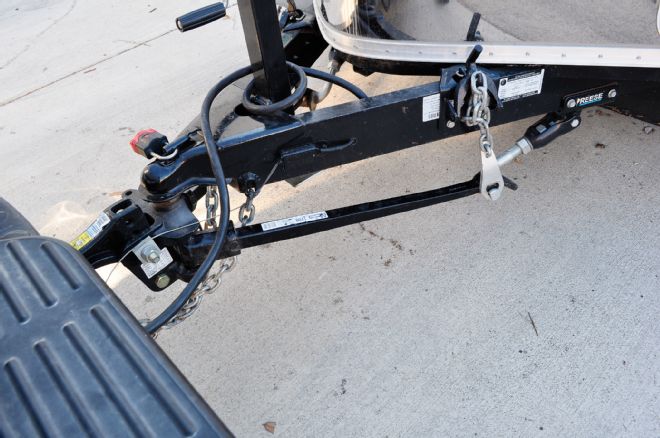 | This trailer has a low average, 1,100-pound tongue weight. It’s set up correctly with a
set of 1,200-pound bars. This particular weight distribution kit from Reese also helps
reduce sway with a cam system attached to the load bars
| This trailer has a low average, 1,100-pound tongue weight. It’s set up correctly with a
set of 1,200-pound bars. This particular weight distribution kit from Reese also helps
reduce sway with a cam system attached to the load bars
3. Brakes
If you’ve spent any time on mountain roads, you’ve undoubtedly seen a few trailer brakes smoking, or even bursting into flames. Considering the importance of the job they do, trailer brakes are one of the most overlooked and neglected trailer systems. The most common type is a drum design, applied using an electric magnet and cam and arm system in place of the hydraulic wheel cylinder. This magnet is a wear item, just like your tires or brake shoes. It needs to be checked and replaced often. When checking or servicing trailer brakes, they will generally need to be adjusted for wear as well. Unlike truck brakes that self-adjust, most trailer brakes do not. That’s your job.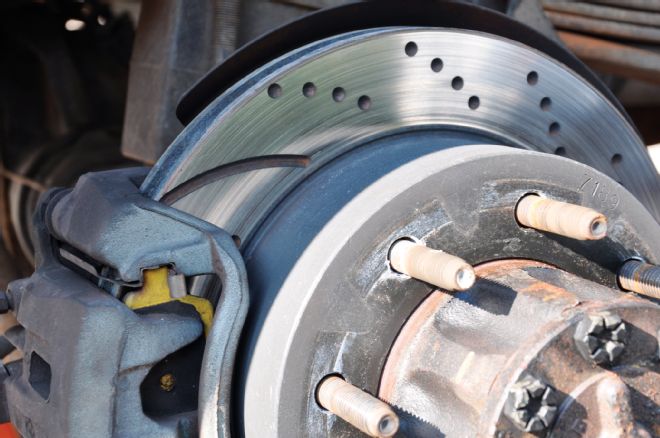
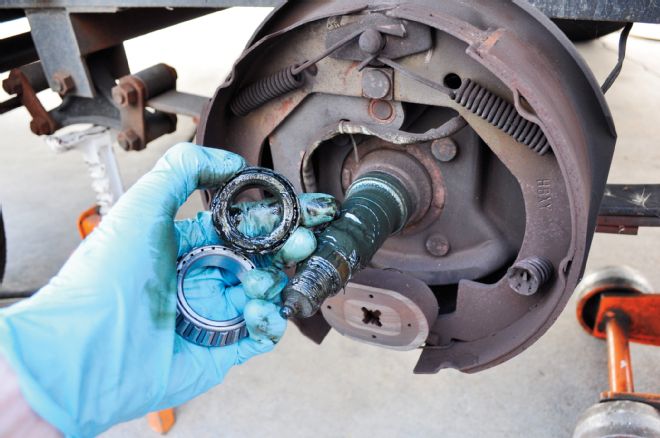
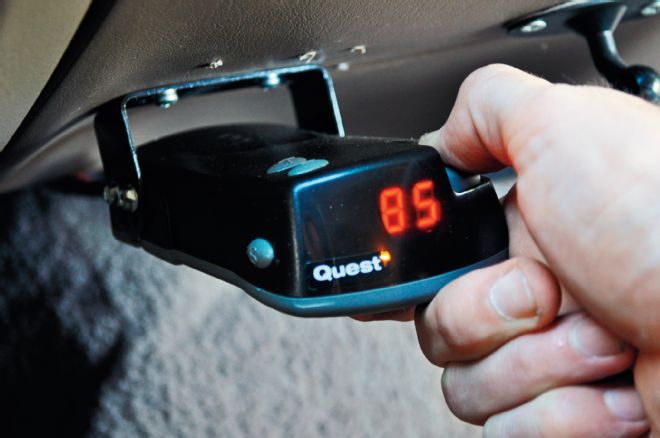
4. Overloaded Vehicle
Heavy loads take a toll on every part of a tow rig. While most fullsize diesel trucks have plenty of reserve power to pull more than they should, it’s the rest of the truck that holds it back. Broken hitches, blown-out shocks, and worn bushings are very common on heavy tow rigs. Checking the suspension, hitch, ball mount, and frame for signs of stress should be done before every tow. To keep the truck level, a set of supplemental airbags is a great accessory.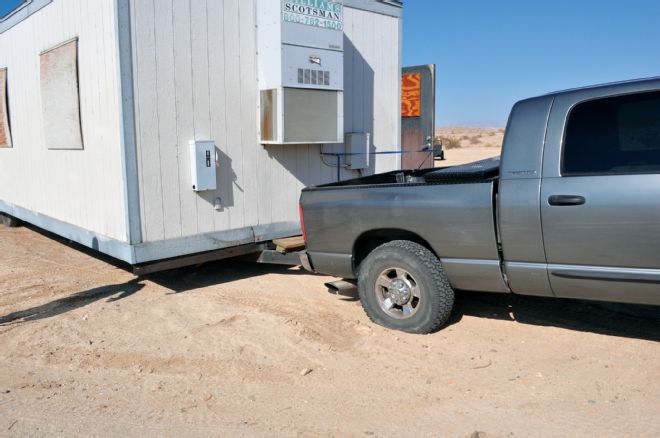
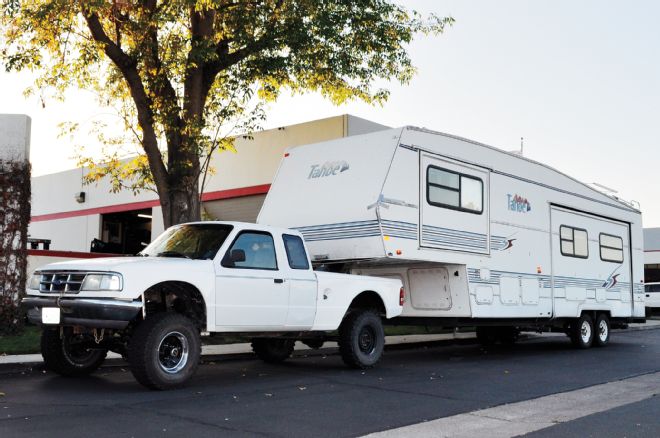
5. Wrong Size Ball
As stupid as it sounds to tow with the wrong size ball, it was high on the list of common mistakes made by customers from just about every shop we’ve talked to. There are three different sized balls for standard bumper towing: 17⁄8 inch, 2 inch, and 25⁄16 inch—and all three of these balls come with a different weight rating. Check the tongue or coupling on every trailer; it should have the ball size required stamped on it.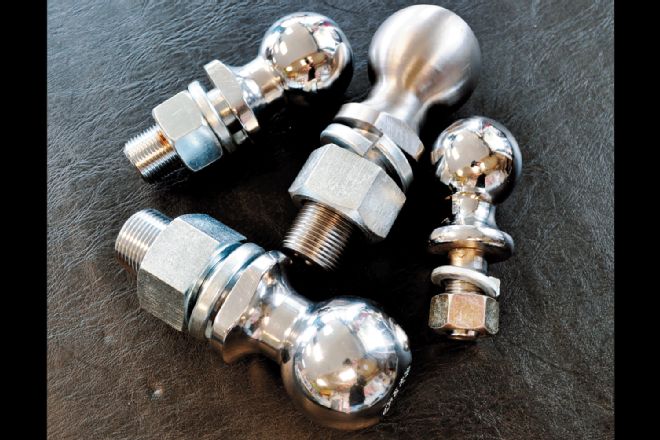 | Choose your ball size wisely.
| Choose your ball size wisely.
6. Towing in “Race” Mode
Just because you can, doesn’t mean you should. Race tunes are fun but should never be used for dragging a trailer up a grade or down a highway onramp. Excessive heat (which can break engine internals), grenaded transmissions, or blown rear ends can all be consequences of choosing the wrong tune for the need.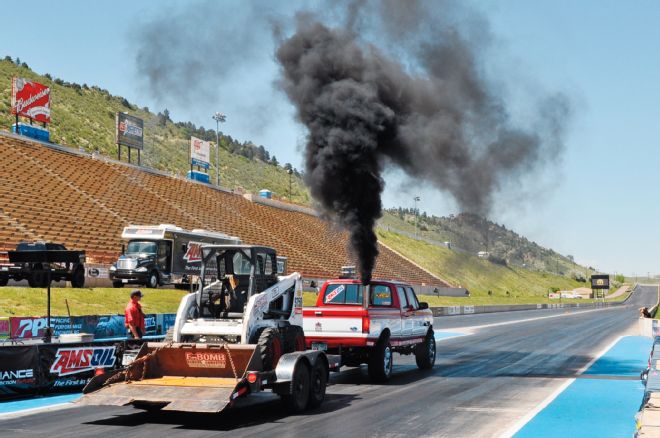 | Resist the urge to turn the tuning up when towing. Your truck will thank you.
| Resist the urge to turn the tuning up when towing. Your truck will thank you.
7. Wrong Size Ball Mount
Trailers are designed to travel level. When pitched up or down, the axles, tires, and brakes all take on added stress. Reduced braking ability, increased tire wear, and other trailer component damage can occur. Most pros carry multiple mounts, one matched to each trailer they regularly tow.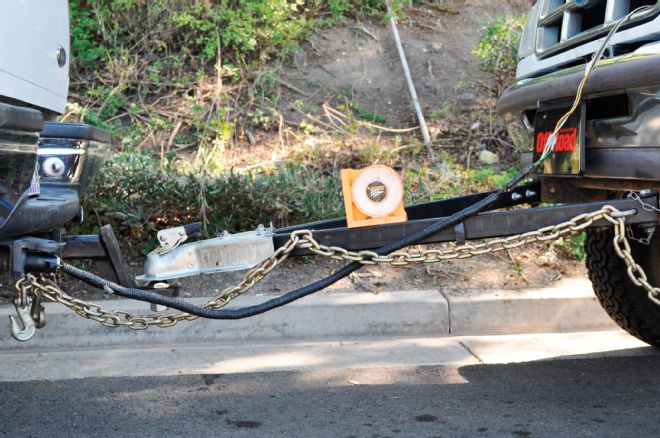 | When dingy-towing a vehicle, the tow bar must be kept perfectly level, or the vehicle
can hop up over the hitch under hard braking, hitting the tailgate. Another possibility
is that it dives under the tow vehicle, lifting the rear end of the tow rig up and off the
ground. Neither are fun situations to find yourself in.
| When dingy-towing a vehicle, the tow bar must be kept perfectly level, or the vehicle
can hop up over the hitch under hard braking, hitting the tailgate. Another possibility
is that it dives under the tow vehicle, lifting the rear end of the tow rig up and off the
ground. Neither are fun situations to find yourself in.
8. Take it Out of Overdrive
Always do your best to keep the engine in its powerband. Correct axle gearing for the load, as well as keeping the transmission out of overdrive during hill climbs or in traffic, will benefit every part of a rig’s drivetrain. With the engine in its powerband under load, the truck will experience reduced wear, lower temperatures, and will increase oil flow—not to mention your truck will have more power, making for an easier, safer tow.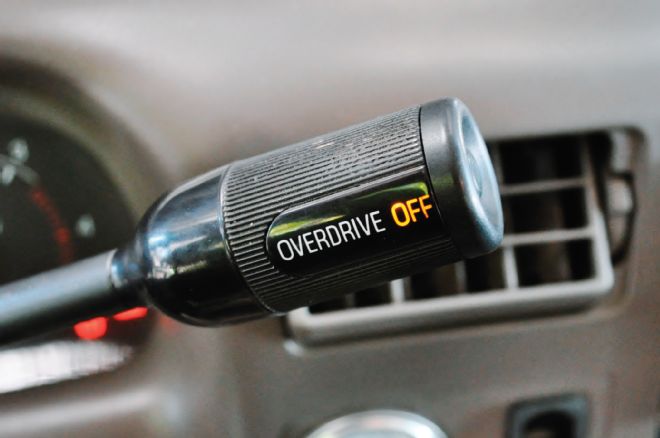 | While climbing hills or merging with traffic, keep the overdrive off. This will result in reduced
engine and transmission wear, lower temperatures, and better throttle response.
| While climbing hills or merging with traffic, keep the overdrive off. This will result in reduced
engine and transmission wear, lower temperatures, and better throttle response.
9. Tire Pressure
Keeping both the trailer and tow rig’s tire pressures in check is a must. Correct pressures will ensure better fuel mileage and prevent overheated tires, which can lead to a blowout. Most trailers sit unused during the off-season, and when tires sit unused, they degrade faster than if they were on the road. Always check the condition of your tires and their air pressure before every trip.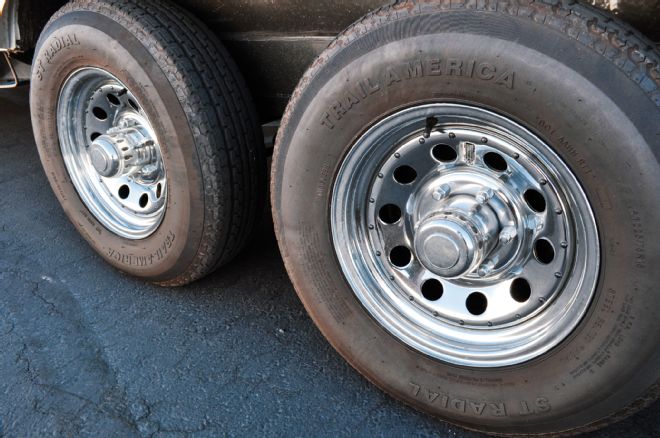 | Check the manufacturer’s specification
for tire pressure and stick to it.
| Check the manufacturer’s specification
for tire pressure and stick to it.
10. Lube It
Trailers are very commonly put away after use and forgotten. However, they require regular service, just like the trucks towing them. Axles need to be greased and the bearings should be inspected at the same time. Any and all pivot points where steel meets steel (or where rubber bushings meet steel) must be greased, or if needed, replaced. Keep the tongue jack or landing gear greased as well. It is never fun when a jack freezes up, and it always happens at the worst possible time and place.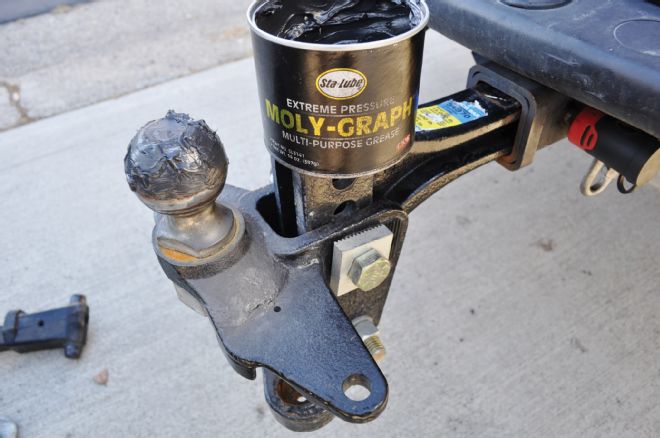 | Hitch balls can and do wear through their couplers if not greased. It’s going to get
your pants dirty at some point, but it is a very necessary part of towing.
| Hitch balls can and do wear through their couplers if not greased. It’s going to get
your pants dirty at some point, but it is a very necessary part of towing.